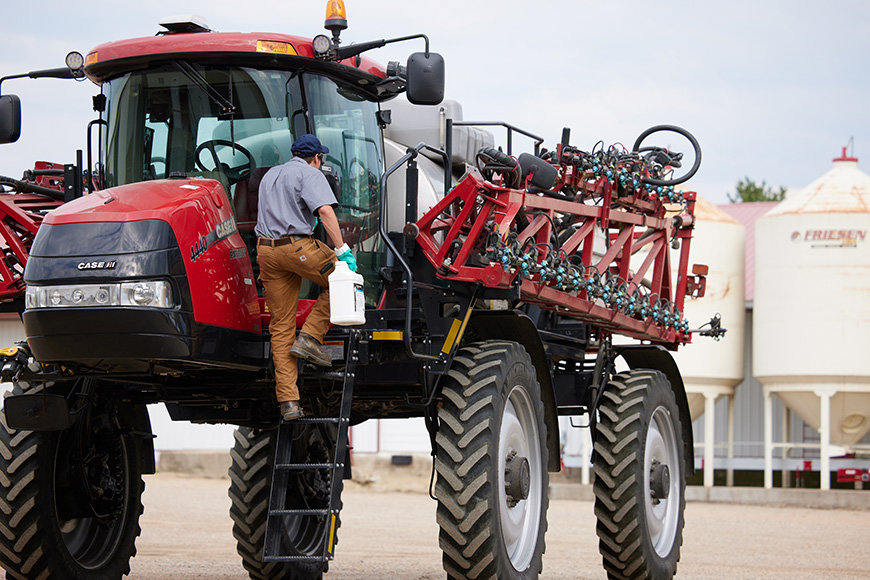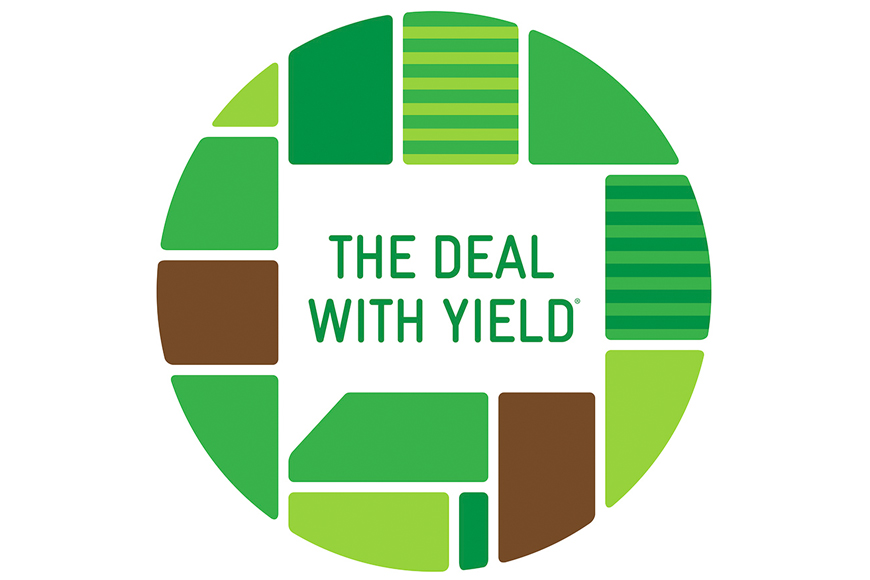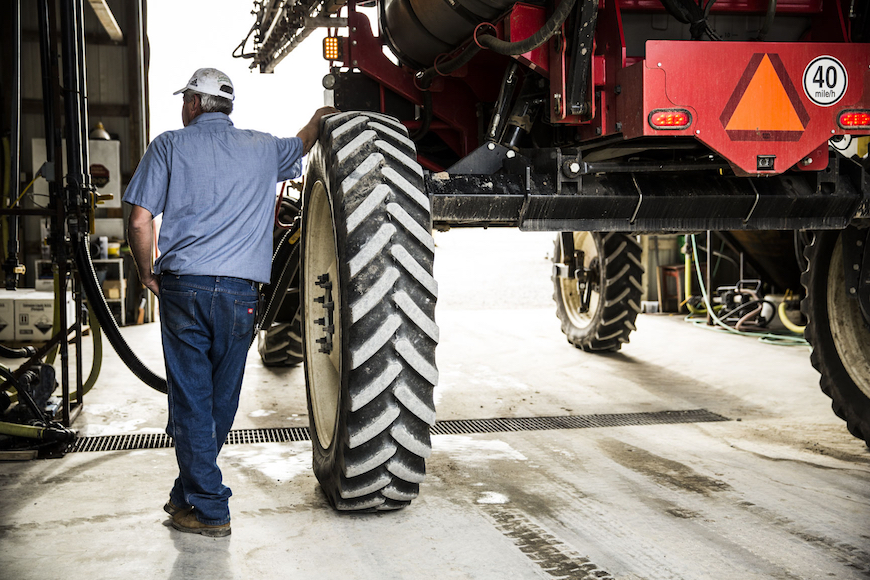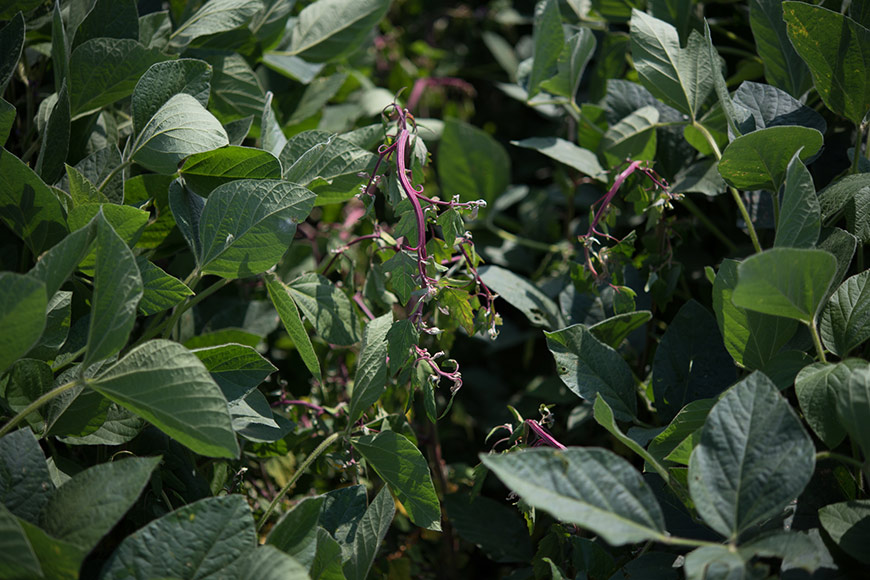4 Adjuvant Classes Proven to Help Improve Weed Control

Weed competition can be one of the costliest threats to your crop’s performance. Adding adjuvants to your herbicide tank mix is an effective way to help enhance the performance of your spray application and improve weed control. Every product in your budget has to work hard and earn its keep this season. Choosing the right adjuvants help you get the best performance from your weed control investment and can help minimize the need for more passes and more product. Get weed control right the first go around to save time and money. Here are four adjuvant classes to discuss with your agronomic advisor.
Water Conditioners
Water conditioners tie up cations including calcium, potassium and magnesium in water so that negatively charged herbicide particles don’t bind to them and reduce herbicide effectiveness. Ammonium sulfate (AMS) water conditioners are commonly used with glyphosate and glufosinate applications to improve herbicide performance.
You’ll want to ensure that water conditioner rates are high enough to condition the water adequately, so I recommend a high-quality, AMS-based product for glyphosate and glufosinate applications. Class Act® NG® adjuvant combines AMS with a nonionic surfactant and antifoaming agent in a liquid premix. One benefit of Class Act NG is that the pre-dissolved liquid AMS alleviates sedimentation and nozzle plugging in the sprayer. Plus, it’s formulated with CornSorb® technology to help improve herbicide uptake into the plant.
Drift Reduction and Deposition Aids
Drift and deposition aids (DRAs) are formulated to optimize spray droplet size to keep more active ingredient on the intended target. Increased spray coverage helps improve weed control and results in fewer weed escapes, which is a key factor in limiting the development of herbicide-resistant weeds.
InterLock® adjuvant is a proven product formulated to reduce fine particles in spray patterns, reducing drift and promoting canopy penetration to help spray reach its target. It can help improve droplet coverage to ensure the spray contacts troublesome weeds. WinField United research shows that including InterLock adjuvant and a DRA in the tank – along with a water conditioner – reduced driftable fines by 60%.1
Crop Oils
High surfactant oil concentrates and high surfactant methylated seed oils help emulsify the oil and lower the surface tension of the spray solution. These products can also make oil-loving herbicides more soluble in the spray solution and improve leaf penetration to increase herbicide uptake.
Destiny® HC adjuvant is a liquid high surfactant oil concentrate methylated soybean oil formulated to optimize the performance of most post-emergent herbicides. It also helps increase droplet drying time to protect herbicides against environmental factors like evaporation. Recent WinField United data shows that adding Destiny HC with a clethodim and glyphosate application on soybeans resulted in a 9.7 bushel per acre increase in yield compared to an application of clethodim and glyphosate without the adjuvant. That could mean an additional $116 per acre in revenue based on a $12 soybean price.
Superb® HC adjuvant is a high surfactant crop oil concentrate for use with glyphosate herbicides. This paraffinic petroleum oil is formulated especially for post-emergence herbicides that require a crop oil concentrate. Superb HC can typically be used at half the use rate of standard crop oil concentrates.
Surfactants
Surfactants are used in herbicide formulations to increase surface contact, reduce runoff and increase leaf penetration. Typical surfactants include spreaders, stickers, emulsifiers and spreading agents.
Nonionic surfactants are water-soluble chemical and lipid compounds that reduce the surface tension of water to improve spreading characteristics. Due to their neutral charge, they are compatible with most herbicide products.
Nonionic surfactants are critical for achieving effective weed control, especially when glyphosate rates are cut. Under those circumstances, the surfactant loads in glyphosate products are reduced. In addition, as the concentration of glyphosate product increases, the surfactant load decreases. Therefore, using a 6-pound per gallon glyphosate product at a 90% application rate reduces much of the surfactant on the acre.
Adding a surfactant such as Preference® adjuvant to the tank mix can help improve the spreading characteristics of the spray solution. Preference adjuvant contains a nonionic surfactant plus an antifoaming agent to help reduce surface tension on the leaf and slow the evaporation rate to improve herbicide uptake.
Keeping fields clean and weedfree is critical for optimal crop performance. Improve your chances of success by adding an effective adjuvant to your herbicide tank mixes. Since each of these products delivers a slightly different benefit, work with your trusted advisor to select the best options for your situation and weed control needs.
1 2018 WinField United Innovation Center wind tunnel data.
All photos are either the property of WinField United or used with permission.
© 2024 WinField United. Important: Before use always read and follow label instructions. Crop performance is dependent on several factors many of which are beyond the control of WinField United, including without limitation, soil type, pest pressures, agronomic practices and weather conditions. Growers are encouraged to consider data from multiple locations, over multiple years and to be mindful of how such agronomic conditions could impact results. Class Act, NG, CornSorb, Destiny, InterLock, Preference, Ridion, Superb and WinField are trademarks of WinField United. All other trademarks are the property of their respective owners.






